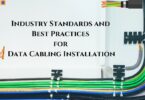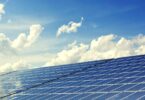Light refers to both natural and artificial light sources. Light from the sun makes it possible to see. It distinguishes nighttime from daytime. Light from lamps makes it possible to see at nighttime or in enclosed spaces that don’t receive natural sunlight.
While illumination is an obvious application of light, there are several other applications of light. Ultraviolet (UV) rays can damage your skin and cause sunburn, but you can also use them to clean the air. Without light, plants wouldn’t grow. Light also has multiple medical applications. When the cholesterol in your skin’s cells is exposed to ultraviolet B rays, the UV light turns the cholesterol into vitamin D, preventing health conditions such as rickets and osteomalacia. Let’s look at the applications of light in closer detail, and humans benefit from these applications.
1. Light Destroys Impurities in the Air
Air quality’s crucial for your health. Your home’s heating, ventilation, and air conditioning (HVAC) system can distribute airborne toxins, such as pollen, viruses, and allergens. When mold grows on condenser coils in your HVAC system, mold spores can spread throughout the house. Airborne toxins cause respiratory issues and other health problems.
You can protect your indoor air quality by having a certified HVAC technician perform routine maintenance on your system or from an HVAC Marketing Agency with list of competent professionals and various services that matches your needs.. Cleaning condenser coils and ducts can reduce the volume of toxins. You can also replace your HVAC filter, trapping pollutants and germs and preventing them from circulating in your home.
Your HVAC technicians can also install an in-duct UV-C system. Your HVAC system sends air through supply vents. This air has been cooled or warmed to the designated indoor air temperature you set on your thermostat. The HVAC system draws air in through the return vents. When that air reaches the HVAC unit, it passes through the filter. During the winter months, your heater warms the air before sending it back through the supply vents. When it’s warm, your air conditioner extracts the heat from the air.
The use of UV lights is very useful in the ability to improve your air quality. In-duct UV-C systems work as air purifiers, subjecting your indoor air to UV light before the air reaches your HVAC unit. The UV-C light sterilizes the air. Exposure to UV-C rays can kill viruses, including the coronavirus and SARS. UV-C light can also kill some forms of mold. In addition to in-duct UV-C light systems, UV-C lamps can sterilize coils, filters, and condensation pans.
2. Light Promotes Plant Growth
Plants rely on photosynthesis to grow. Photosynthesis refers to converting water, oxygen, and light into the energy plants need to grow. Growing plants produce seeds. Without light, photosynthesis wouldn’t occur, and plants would die out.
You can use artificial lights to initiate photosynthesis. This is a popular option for those who want to grow cannabis plants. A custom build LED grow light is an affordable option for those interested in stimulating indoor plant growth. Building your custom LED grow light is affordable, and you can maximize bulb efficiency, enabling you to grow cannabis successfully while still containing your energy costs.
Full-spectrum lights provide the same nutrients natural light supplies, enabling plants to grow indoors during all seasons. Cannabis growers can produce plants year-round, thanks to LED bulbs.
3. Light’s Used in the Medical Field
Light’s transforming the health care field. Sterilization technicians use UV light to sanitize medical equipment. Since UV rays can destroy COVID-19, SARS, and other viruses, ultraviolet light’s a powerful medical tool used to decontaminate medical equipment and facilities.
Light from lasers stimulates vasodilation, increasing blood distribution. Consequently, using lasers increases tissue oxygenation by increasing the amount of oxygen in the blood. Light is also a crucial part of diagnostic equipment used to identify medical issues such as tumors or cavities. Both natural and artificial light sources have multiple applications. Today, light can be used to improve indoor air quality and stimulate plant growth. Light’s also used to sterilize medical equipment and perform non-invasive medical procedures.









